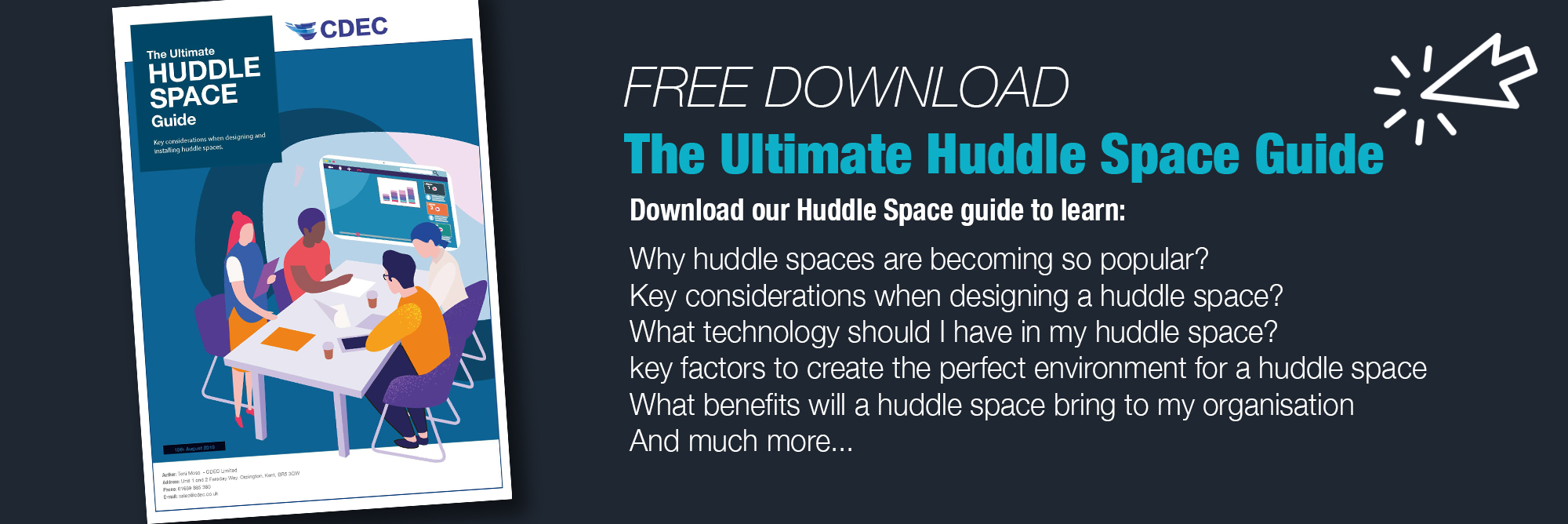‘Huddle room’ has become a buzzphrase across the corporate sector in recent years, but people’s idea of what a huddle room is and what it should be used for can still vary quite widely.
The most accepted definition of a huddle room is a small, private and comfortable meeting area designed to accommodate 2-6 people and equipped with teleconferencing and collaborative tools. Some people believe that these spaces can be slightly larger, holding up to 8 people, and the truth is that size isn’t too important, it’s more about what’s done in these rooms.
Huddle rooms are all about collaboration and communication, and the technologies within will be geared towards making this quick, simple and efficient. The size of huddle rooms limits the number of attendees meaning only those people who need to be there will be present. Not only does this make meetings – or huddles – more effective, it also means time is not wasted sitting in unnecessary meetings.
Huddle rooms will feature an array of AV and IT equipment, but central to the room will be the videoconferencing setup. Other technology to consider includes a display, a whiteboard and an audio system, all of which will make it easier to communicate both internally and externally.
This combination of technology also helps to make the room a truly flexible space, making it suitable for internal collaboration, conversations with remote workers or external stakeholders, as well as being an ideal place for quiet work, which can be elusive in modern open plan offices. Huddle rooms are the ideal place for impromptu meetings that can now happen without having to reserve time in a large meeting space or boardroom.
Despite only being a small space, huddle rooms can make a big difference to working environments and team morale. Read more about the how to create the perfect huddle space environment here. Or if you want to know what technologies you should include in a huddle space, check our our recent blog here.

